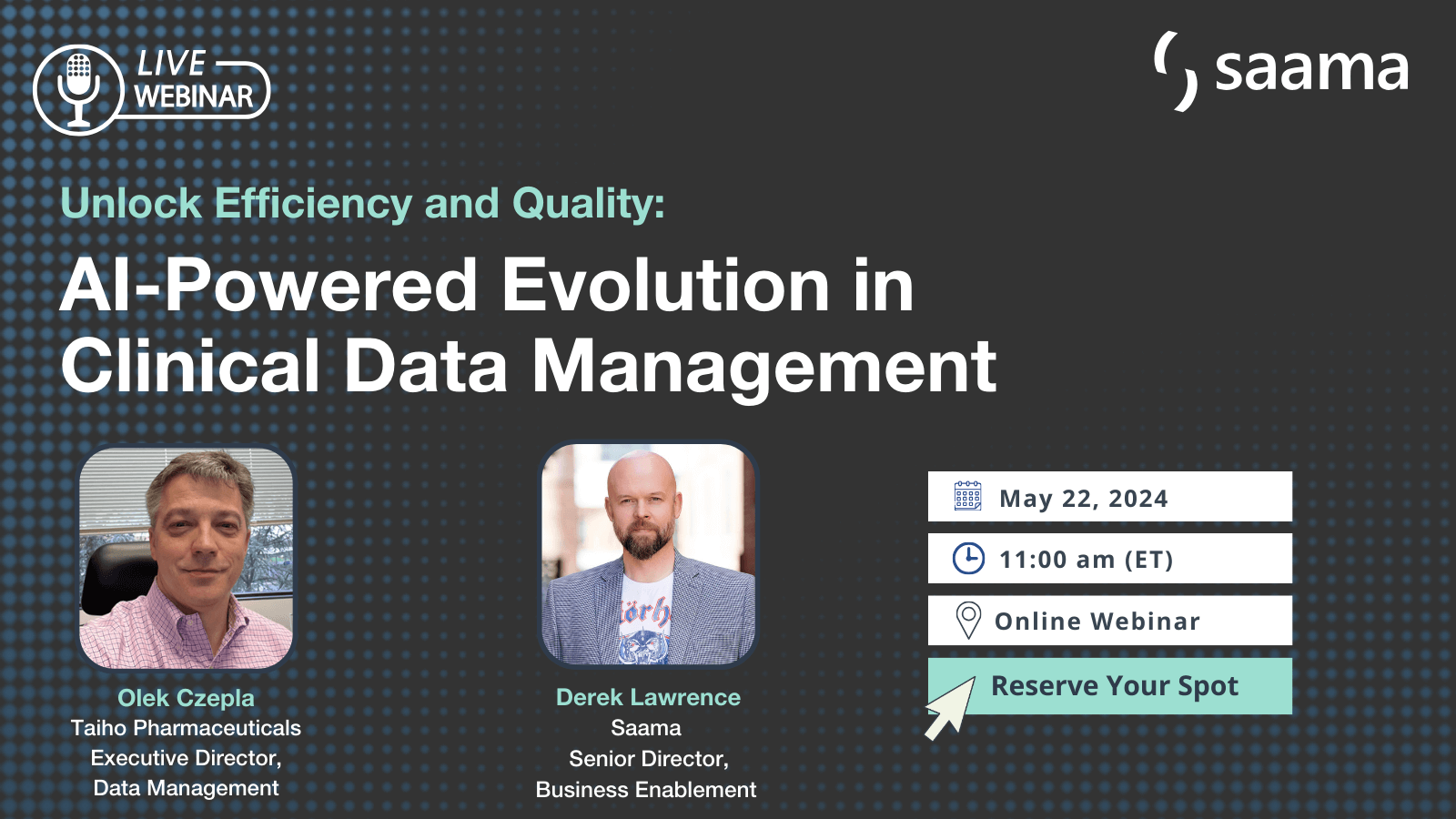When introducing AI to any part of clinical trials, its benefits and advantages often overshadow the very important considerations to make about its implementation. While a powerful and agile tool, AI technology is still, at the end of the day, a technology.
Like any software or technology, it necessitates careful planning before introducing it to clinical operations. Let’s take a closer look at the important considerations every organization should make before adopting AI in clinical operations.
The benefits of introducing AI to clinical operations
AI introduced strategically and with a carefully defined purpose, can augment and enhance an array of processes within clinical operations, including:
- Reducing the number of systems used and handoffs between personnel.
- Reducing cycle times and increasing efficiency.
- Reducing the time taken to identify and mitigate evolving risks.
- Increasing site and patient centricity through streamlined communication.
What to consider before introducing AI into your clinical operations processes
AI, and GenAI in particular, is cropping up in nearly every industry and is at the center of most tech-oriented conversations. As a result, it might feel like investing in an AI technology is an imperative decision, or risk falling behind. However, it could be a costly mistake to select an AI software solution that does not integrate into your workflow or serve your larger business needs.
The single most important step is to start from your business objectives. Your business objectives can be fulfilled by AI but they might not necessarily need AI to be met. That’s why it’s vital to first assess whether AI tools and technology would be a good fit for your goals.
It’s best to do this by following a step-by-step approach:
- Start with identifying your pain points or opportunities within your processes.
- Then, evaluate the combination of AI technologies that can deliver to your business objectives. There is no single AI entity or tool that will solve all of your challenges. Likely, it will be a combination of AI and other technology that will come from an AI technology vendor.
- Ensure that the AI tools and software selected will work seamlessly with your existing teams. Humans will always remain at the forefront of all your business processes, especially when AI is introduced. AI is there to be an assistant to simplify tasks and help humans, not replace them.
- Finally, use a trusted change methodology. Introducing AI is a massive change within your organization and it shouldn’t be implemented without a careful and considered change strategy to guide its rollout.
The risks of investing in AI solutions too quickly
AI technologies can help accelerate clinical development and clinical operations in particular. But, investing in a suite of AI tools and/or solutions without doing thorough proper planning could quickly become a costly misfire.
If the AI tool’s capabilities are misaligned with your organization’s goals, don’t integrate into your existing operations or workflows easily, or impede your team’s ability to perform their tasks instead of helping them, AI can quickly become a time and cost sink for the entire clinical operations team.
Conclusion
Remember, AI is not a single entity or technology. It consists of a variety of different tools, software, and technologies that utilize AI capabilities, including machine learning (ML), deep learning, natural language processing (NLP), and GenAI, to name a few. AI is not a replacement for humans in your organization. It augments human intelligence, but it cannot replace it. You should always keep a human in the loop when managing AI technologies.
At Saama, our suite of proprietary AI-powered platforms can enhance and simplify your clinical operations at every process level. If you’d like to learn how our AI solutions can integrate into your existing workflows and aid your clinical teams, book a demo with us.

